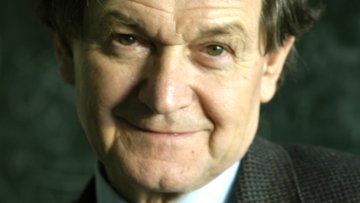InFoMM CDT Group Meeting
Abstract
Niall Bootland (Scalable Two-Phase Flow Solvers)
Sourav Mondal (Electrohydrodynamics in microchannel)
Abstract: Flow of liquid due to an electric potential gradient is possible when the channel walls bear a surface charge and liquid contains free charges (electrolyte). Inclusion of electrokinetic effects in microchannel flows has an added advantage over Poiseuille flow - depending upon the electrolyte concentration, the Debye layer thickness is different, which allows for tuning of flow profiles and the associated mass transport. The developed mathematical model helps in probing the mass transfer effects through a porous walled microchannel induced by electrokinetic forces.
What can fashionable ideas, blind faith, or pure fantasy have to do with the scientific quest to understand the universe? Surely, scientists are immune to trends, dogmatic beliefs, or flights of fancy? In fact, Roger Penrose argues that researchers working at the extreme frontiers of mathematics and physics are just as susceptible to these forces as anyone else.
16:00
The Steinhaus-Weil property: its converses, Solecki amenability and subcontinuity
14:30
Forbidden vector-valued intersection
Abstract
Given vectors $V = (v_i: i \in [n]) \in R^D$, we define the $V$-intersection of $A,B \subset [n]$ to be the vector $\sum_{i \in A \cap B} v_i$. In this talk, I will discuss a new, essentially optimal, supersaturation theorem for $V$-intersections, which can be roughly stated as saying that any large family of sets contains many pairs $(A,B)$ with $V$-intersection $w$, for a wide range of $V$ and $w$. A famous theorem of Frankl and Rödl corresponds to the case $D=1$ and all $v_i=1$ of our theorem. The case $D=2$ and $v_i=(1,i)$ solves a conjecture of Kalai.
Joint work with Peter Keevash.
14:30
Turán Numbers via Local Stability Method
Abstract
The Turán number of an $r$-graph $G$, denoted by $ex(n,G)$, is the maximum number of edges in an $G$-free $r$-graph on $n$ vertices. The Turán density of an $r$-graph $G$, denoted by $\pi(G)$, is the limit as $n$ tends to infinity of the maximum edge density of an $G$-free $r$-graph on $n$ vertices.
During this talk I will discuss a method, which we call local stability method, that allows one to obtain exact Turán numbers from Turán density results. This method can be thought of as an extension of the classical stability method by generically utilising the Lagrangian function. Using it, we obtained new hypergraph Turán numbers. In particular, we did so for a hypergraph called generalized triangle, for uniformities 5 and 6, which solved a conjecture of Frankl and Füredi from 1980's.
This is joint work with Sergey Norin.
The "surfactantless" middle phase
Abstract
Dstl are interested in removing liquid contaminants from capillary features (cracks in surfaces, screw threads etc.). We speculated that liquid decontaminants with low surface tension would have beneficial properties. The colloid literature, and in particular the oil recovery literature, discusss the properties of multiphase systems in terms of “Winsor types”, typically consisting of “brine” (water + electrolyte), “oil” (non-polar, water-insoluble solvent) and surfactant. Winsor I systems are oil-in-water microemulsions and Winsor II systems are water-in-oil microemulsions. Under certain circumstances, the mixture will separate into three phases. The middle (Winsor III) phase is surfactant-rich, and is reported to exhibit ultra-low surface tension. The glycol ethers (“Cellosolve” type solvents) consist of short (3-4) linked ether groups attached to short (3-4 carbon) alkyl chains. Although these materials would not normally be considered to be surfactants, their polar head, non-polar tail properties allow them to form a “surfactantless” Winsor III middle phase. We have found that small changes in temperature, electrolyte concentration or addition of contaminant can cause these novel colloids to phase separate. In our decontamination experiments, we have observed that contaminant-induced phase separation takes the form of droplets of the separating phase. These droplets are highly mobile, exhibiting behaviour that is visually similar to Brownian motion, which induces somewhat turbulent liquid currents in the vicinity of the contaminant. We tentatively attribute this behaviour to the Marangoni effect. We present our work as an interesting physics/ physical chemistry phenomenon that should be suitable for mathematical analysis.


